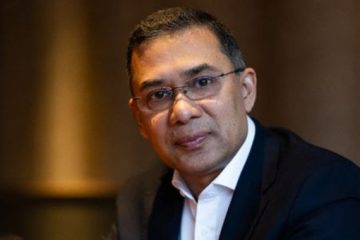Khalashpir Coal Mine Project
Hosaf’s sketchy study raises questions
Govt spends $95,000 for review of study by ex-consultant of Hosaf
The techno-economic feasibility study for Khalashpir coal mine project by Hosaf Consortium has finally been trashed by a foreign consultant questioning the study’s scientific basis, methodology and raising a host of other questions, sources said.
British consultant IMCL in the first of its kind review of a coal mine feasibility study notes that there are fundamental geological issues regarding the Khalashpir deposit which the company must address before framing realistic and financially viable mining business plans.
The consultant found that Hosaf had done inadequate geological work and had deployed no accredited geologist for the job. Its study offered no detailed outline for environment or resettlement issues, and all these work should be done again before submitting such a study report.
The IMCL, which used to be represented by Hosaf in Barapukuria coal mine project from the nineties and had worked for Hosaf in the same Khalashpir project a few years back, was appointed a few months ago for such a unique review through a tender floated during the last caretaker government’s tenure. Interestingly, the Hydrocarbon Cell of the energy ministry that deals with oil and gas-related policy issues gave the appointment.
The cell last week made a presentation on the IMCL review to the energy secretary and formally submitted the full review to the ministry Sunday.
Khalashpir coal field was discovered by Geological Survey of Bangladesh (GSB) in 1989.
The then BNP-led alliance government on October 11, 2003, secretly gave Hosaf the licence to explore Khalashpir coal zone in 2,500 hectares of land. Hosaf applied for mining lease for the area in the same year for mine development.
Hosaf does not have mining experience.
The company in association with Shandong Ludi Xinwen Mining Group of China in July 2006 submitted the feasibility report to the Bureau of Minerals Development (BMD) with a plan to develop an underground mine. The report was prepared by China Jinan Mining Development Corporation engaged by Hosaf. During the study, Hosaf took help of Geotech-India, NamNam of North Korea, Geo-Mineral Engineering of China and IMCL.
Many officials and experts had then pointed out that the Hosaf study was a copy of that for Barapukuria coal mine project in which it acted as the local agent, questionably, for all the contractors involved.
“The Techno Economic Feasibility Study was prepared mainly on the basis of Geological Survey of Bangladesh’s (GoB) geological reports published earlier and subsequent exploration work (no internationally acceptable standard was followed and the exploration activities were carried out without any kind of monitoring by the GoB),” one expert said.
The experts also questioned quality of the study and claimed that Hosaf had drilled only three boreholes to come to its conclusions. But the company claimed to have drilled 14 boreholes. Even Hosaf’s own claims do not stand as a strong basis for such a study as the feasibility study of Asia Energy was done on the basis of 108 such holes.
Hosaf’s study remained shelved, but the BMD did not cancel its licence for Khalashpir coal zone. The caretaker government last year initiated the process of reviewing Hosaf’s study through the Hydrocarbon Cell. The caretaker government had awarded several power contracts to enterprises owned by Hosaf chief Moazzem Hossain, who is an accused in the sensational corruption case concerning Barapukuria coal mine.
Some officials expressed surprise that the government spent about $95,000 to pay IMCL for reviewing a private company’s feasibility study. “When Asia Energy submitted its study report, the government formed a committee headed by Buet Professor Nurul Islam to review that study. There was no cost involvement. But the Asia Energy study was much bigger and detailed that needed professional scrutiny. The Hosaf study is visibly a sketchy report,” noted an official.
Explaining why Hydrocarbon Cell was given such a job when it should have been done by the BMD, one source said, “ BMD did not have enough funds to carry out a review. Hydrocarbon Cell had some Norwegian donation.”
IMCL observations
Sources said IMCL in its review suggested that additional drilling should be carried out by a reputable and proven drilling contractor with modern and well-maintained equipment, who is qualified to operate in accordance with Joint Ore Reserve Committee (JORC), an internationally acceptable coal resource assessment code.
The review says previous boreholes that yielded unacceptable levels of core recovery should be re-drilled; an additional exploration must be carried out in accordance with internationally acceptable standards such as JORC utilising downhole geophysical logging in every hole as Hosaf drilled holes without logging; samples should be taken, logged and prepared as per JORC and supervised by a JORC- accredited senior geologist; analysis of collected samples should be undertaken by at least two accredit international laboratories observing the standard rules of analysis.
IMCL further says some coal samples indicate that coal at Khalashpir might have metallurgical coking properties and should be re-tested with fresh samples; underground mining would be preferred method of coal extraction particularly with respect to the surface environmental and social considerations; the Hosaf study’s production design parameters are out of date with respect to current longwall technology, or inappropriate to meet the overall production targets; spontaneous combustion and air temperatures are likely to be the dominant underground environmental issues which interact, and it is to be reflected in the design process.
The company should have made environmental and social impact studies for construction, operation and mine closure stages, and the relevant department has to consult the local people to consider problems threatening the environment in and around the mine, the review says.
Further professional studies are needed to address hydro-geological issues including hydraulic conductivities and aquifer behaviours. There is no information about Acid Mine Drainage in the study, IMCL notes.
Mining subsidence impacts should be addressed during Environmental Impact Assessment (EIA) and engage the local population and all stakeholders in open discussions to ensure that land owners and workers are fully informed at all stages of project development and implementation; the surface layout of the study is based on Barapukuria mine surface facilities. Many of these facilities are unnecessary, IMCL observed.
Hosaf’s study
In its study, Hosaf claimed that Khalashpir coal reserve occurs at depths between 257-480 metres with an estimated total reserve of 451 million tonnes — proven 277 m tonnes and indicated 174 m tonnes. Of the reserve, seam I, II and IV are considered to have a potential for mining 277 m tons.
The IMCL review puts this estimate at 337 million tonnes for seam I, II and IV, showing that Hosaf’s assessment is grossly different.
Hosaf suggested underground mining with initial production target of two million tonnes a year, which would be raised to four million tonnes in the 10th year of production.
Regarding underground mining risks and environmental impact assessment, the study said the spontaneous combustion and subsidence risks are high, including high methane emission and high underground mine temperature hazards. But it gave no details of management plans for the mining hazards and environment issues, stating ‘proposed damage and hazards, reclamation plan etc have been duly undertaken.’




















